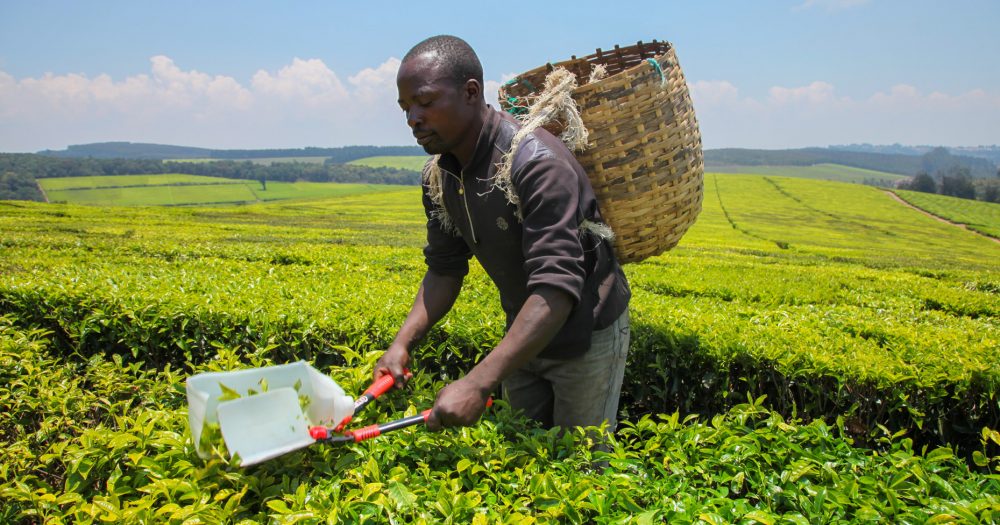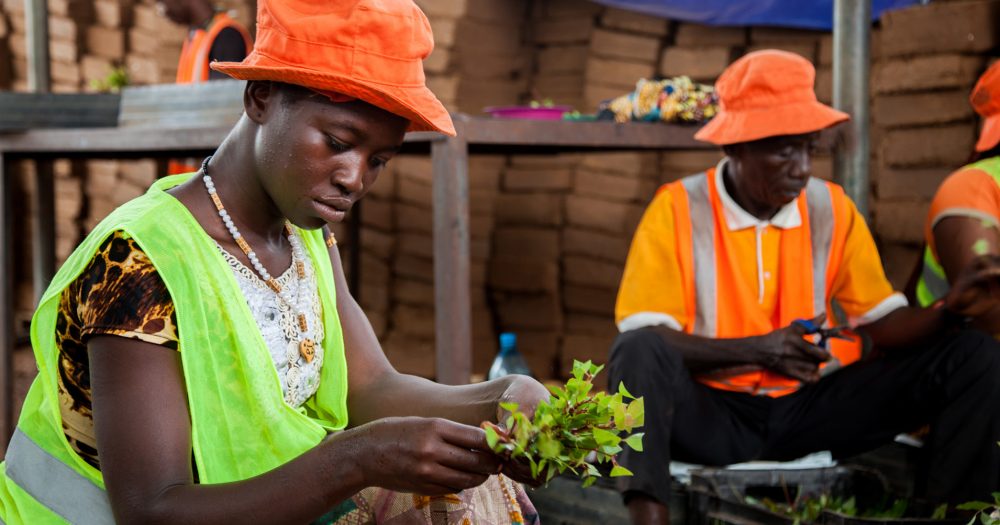Our investment
Description of the investment.
Description of the investment.
Our investment will support the company’s expansion, with the aim of helping increase productivity and improve income for farmers, and bringing more sustainably-farmed products to more consumers in India.
Impact information
Applies to investments made from 2019 onwards. The tabs in this section define what we expect to achieve through the investment, assessing the potential impact of the investment against six dimensions of impact. You can find more details on our methodology of assessing impact here.
Applies to investments made from 2019 onwards. The tabs in this section define what we expect to achieve through the investment, assessing the potential impact of the investment against six dimensions of impact. You can find more details on our methodology of assessing impact here.
What?
| Impact |
|---|
|
|
|
How?
| Primary | Secondary |
|---|---|
|
Akshayakalpa's organic and sustainable practices increase yields for low-income smallholder farmers in a sustainable way, which is expected to result in reduced emissions intensity per litre of milk produced. |
Who?
| Stakeholder | Geography | Characteristics |
|---|---|---|
| Farmers (suppliers) |
India |
80 per cent of farmers live below $6.85 per day [2017 PPP]. Approximately 40 per cent of farmers who supply to the company do not own their own land and are leasing land for their dairy operations. Of those who own land, the typical landholding is 3-5 acre of land. |
| Employees / contractors |
India |
Approximately 30-40 per cent of the company's employees are at the farm managing supply side operations, including extension officers, farm infra services team, veterinarians. |
| Planet |
Planet |
Greenhouse gases that are emitted from the dairy supply chain include carbon dioxide (CO2), methane (CH4), nitrous oxide (N2O) and to a lesser extent hydrofluorocarbons (HFCs). Methane emitted from enteric fermentation is the major hotspot contributing up to 75 per cent of the total greenhouse gas emissions of the dairy sector. Overall, the dairy sector is responsible for around 30 per cent of India’s methane emissions, and reducing these emissions is likely to make a significant contribution to achieving net-zero. |
How much?
| Scale | Depth/Duration |
|---|---|
|
At the time of our investment, Akshayakalpa was reaching over 650 active farms. Through our investment, by 2028, we expect the company to reach an additional 2,500 farms. |
Initial estimates suggest farmers experience:
|
Contribution/additionality
| Contribution/additionality |
|---|
|
Financial additionality: Our participation will keep the shareholding of major impact-aligned investors at par with commercial investors, thereby helping the company retain its strong impact focus. |
Risk
Execution RiskClosely linked to the company expansion beyond its stronghold areas, into newer states. |
Impact score
|
Impact score (at point of investment)
The Impact Score is a tool to help us manage our performance against our strategic impact objectives. It is designed to incentivise investments that support our productive, sustainable, and inclusive objectives. You can find out more here. The Impact Score is published for investments made from 2022 onwards. The Impact Scores are calculated at the point of investment. We publish the Impact Scores of new investments annually, once the information has been externally assured by an independent third party. |
|---|
10 |
Environmental and social information
-
Environmental and social summary
A high-level description of the environmental and social aspects of the investment. This may include a summary of key environmental and social risks identified during environmental and social due diligence (ESDD); key elements of an environmental and social action plan (ESAP); or ways in which we plan to support the investee improve environmental and social standards, such as through their environmental and social management system (ESMS); as well as any other priority areas agreed with the investee.
-
Environmental and social risk
A risk category rating, which indicates the level of environmental and social risk associated with an investment. For an explanation of the categorisations used, see here. We consistently provide an environmental and social risk category for all investments screened from 2023 onwards.
Environmental and social summary
We agreed on an ESAP with the company, focused on the development of a robust ESMS, including internal capacity building, physical climate risk assessment, and assessment of new expansions.
Environmental and social risk
Medium-High
Reporting and Complaints Mechanism
The Reporting and Complaints Mechanism allows anyone outside BII to report alleged breaches of the business integrity or environmental and social provisions of BII’s Policy on Responsible Investing. This includes breaches made by BII, a BII investee, or a portfolio company of a fund in which BII has invested. The Reporting and Complaints Mechanism Rules are available here. Reports and complaints can be submitted by email to reportsandcomplaints@bii.co.uk or by mail. See more details on our Reporting and Complaints Mechanism here.
For any other general enquiries contact us at enquiries@bii.co.uk
-
Key facts
- First published
:
When the investment was first published on the website database.
- March 2024
- Last updated
:
When the last quarterly update of the website database occurred.
- June 2024
- Project number
:
An identifier number shared by investments in the same project.
- D5316
- Status
:
The current status of the investment (green flag for active and red flag for exited).
- Active
- Region
:
The geographical region where the country is located. We currently invest in Africa, South Asia, South East Asia and the Caribbean. In 2023, BII’s investment mandate was extended allowing it to invest in regional funds linked to Ukraine, with the majority of activity expected to begin post-war. Investments outside these regions were made prior to 2012 under previous investment mandates.
- South Asia
- Country
:
The countries where the investment delivers impact. Where impact is delivered in multiple countries, this is indicated.
- India
- Sector
:
We prioritise those sectors that facilitate development and need our capital the most. Our priority sectors contribute towards many of the Sustainable Development Goals. They range from investing in the power infrastructure that will provide people with better access to electricity, to investing in financial institutions that direct capital to the individuals and businesses that need it the most.
- Food & Agriculture
- Investment type :
- Equity
- Start date :
- December 2023
- Amount :
- $1.99m
- Currency of investment :
- INR
- Domicile
:
The company or investment fund’s place of incorporation.
- India
We provide capital in the following ways: directly – through direct equity, direct debt, guarantees and other non-intermediated financial instruments; and indirectly – principally through investment funds.
For direct investments and fund investments, this is the date BII committed capital to the investments. This is typically the date on which legal agreements are signed by all parties.
For the portfolio companies of our fund investments, this is the date (either the month or the quarter) on which the fund committed capital to the portfolio company.
For direct equity investments, this is the date at which British International Investment exited the investment.
For debt investments, this is the date at which the final debt repayment was made.
For funds, this is the date at which the fund was terminated.
For underlying fund investments, this is the date at which the fund manager exited the investment.
The total amount committed, per financial instrument, per investment, on the date BII becomes subject to a binding legal obligation to provide funding or assume a contingent liability. This information is provided in US dollars.
For direct investments, this is the amount that BII has committed to the business or project. For fund investments, this is the amount BII has committed to the fund.
The currency in which the investment was made.
- Climate finance
:
Indicates whether the investment is climate finance qualified or partially climate finance qualified and the type of climate finance (adaptation, mitigation or both). We define climate finance using the multilateral development bank (MDB) and the International Development Finance Club (IDFC) Common Principles climate finance methodology. See Common Principles for Climate Mitigation Finance Tracking and Common Principles for Climate Change Adaptation Finance Tracking. We provide the climate finance qualification and type for commitments from 2020 onwards, which is when we launched our Climate Change Strategy.
- Fully qualified
- Climate finance type:
- Mitigation
- First published
Related investments made by BII into this company:
| Investment name | Commitment | Region | Sector | Start date | Status |
|---|---|---|---|---|---|
| Investment 01 | $6.89m | South Asia | Food & Agriculture | July 2022 | Active |
| Investment 02 | $6.89m | South AsiaSouth Asia | Food & Agriculture | July 2022 | Active |
| Investment 03 | $1.99m | South AsiaSouth AsiaSouth Asia | Food & Agriculture | December 2023 | Active |
| Investment 05 | $90.45k | South AsiaSouth AsiaSouth AsiaSouth Asia | Food & Agriculture | February 2024 | Active |


